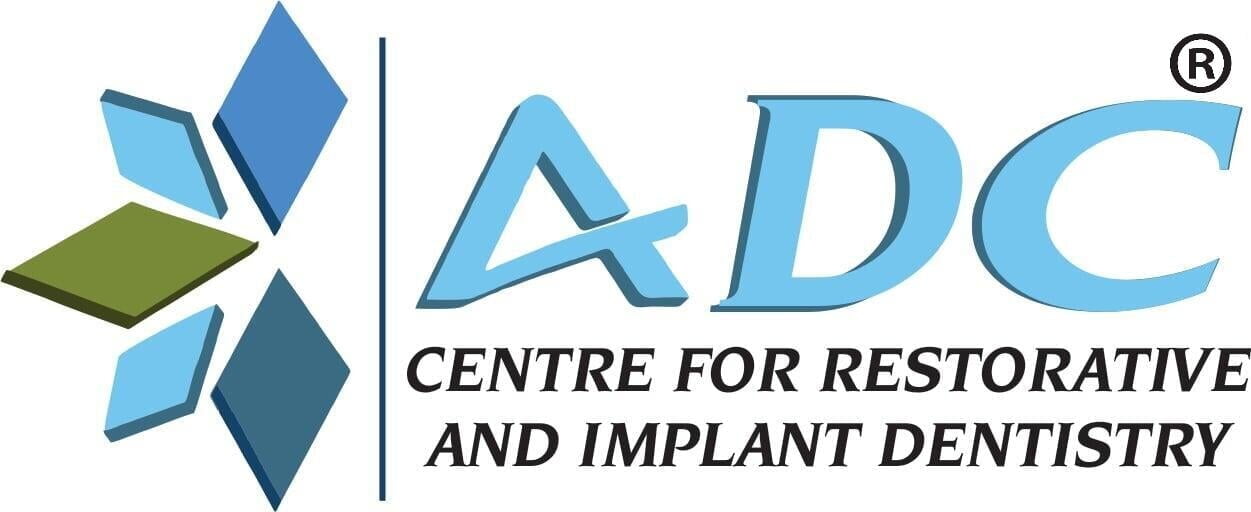The essential choice for the perfect smile is dental crowns and bridges. However, there are a few things like the following to do after getting a crown installed.
The essential choice for the perfect smile is dental crowns and bridges. However, there are a few things like the following to do after getting a crown installed.
Dental crowns and bridge are the crucial option for achieving the ideal smile. However, there are several actions you ought to perform following the installation of a permanent crown. You should generally adhere to the oral hygiene guidelines that come with any dental operation. Crowns for teeth are no different. Let's look at how to keep your smile intact after the treatment. The same instructions are true following a dental bridge procedure.
Even though crowns and bridges are frequently the most resilient restorations, the tooth beneath them is still susceptible to decay, especially where the crown meets the tooth (along the gum line). At least twice a year, we advise professional maintenance and review. If you've ever experienced periodontal disease (gum disease), you should visit us at least three times yearly. Maintaining your new crown(s) or bridge properly entails limiting your consumption of foods and beverages high in sugar and brushing and flossing at least twice a day. Proper restoration will increase its lifespan and lessen the risk of oral health issues in other areas of your mouth.
Bridge or Crown Cement
Bridge or Crown Cement
- Wait an hour before eating after your new, finished crown or bridge is set in place.
- For a few hours, avoid foods that are firm or sticky.
- Follow your dentist's special hygiene guidelines to resume your regular brushing and flossing routine.
Daily Brush and Floss
Daily Brush and Floss
While the tooth holding your crown is artificial, it is extremely real. So be sure you brush and floss your teeth. You should brush your teeth to get rid of sticky plaque, even if the crown covers the top portion of your teeth. Your brushing and flossing routines are extremely important to the longevity of your crown.
Twice-daily flossing is essential for maintaining good oral health. By flossing, you can help get rid of bacteria and food particles lodged between your teeth. When flossing, take care not to knock the crown out of place. Be cautious not to chew on the teeth that have the crown during the first week after installation. Around other teeth, you can carry on with your oral hygiene practice.
Eliminate Bad Oral Habits
Eliminate Bad Oral Habits
However, we occasionally need help to break certain habits we'd like. Your dentist will advise you on which habits you should give up. To begin with, it is strictly forbidden to engage in behaviours like gnawing on your fingernails or biting them off with your teeth. Avoid using your teeth to open a bottle the same way. Not only may trying to open a bottle break your teeth, but it can also harm your gums if the broken piece of the tooth gets lodged there. Additionally, until your dentist gives the all-clear, refrain from using mouth fresheners, chewing tobacco, or spitting. If you can't go a day without a drink, try to hold off for the first 48 hours or until you've weaned yourself off your painkillers. You'll benefit from this by improving your appetite and oral health.
How long may I smoke following the cementing of a temporary crown or bridge?
How long may I smoke following the cementing of a temporary crown or bridge?
Smoking immediately after getting a temporary crown installed might lead to various oral health issues. One of the issues is the dry socket, where blood clots form after tooth extraction. Being careful is advised because it is a painful operation. Ask your dentist about it if you smoke frequently. Generally, the first 48 hours should be spent without smoking. For the first week following installation, it is advised that you refrain from smoking if at all possible.
Is removing a crown painful?
Is removing a crown painful?
Your dentist will replace the temporary crown with a permanent one when your tooth has been rebuilt, and the temporary crown has completed its purpose. It would help if you now got rid of the temporary one. Removing a crown is quick and painless and doesn't require much time from your dentist. The permanent crown will be removed and replaced by your dentist without anaesthesia.
Chewing
Although your temporary restoration should be very pleasant, you must change how you chew to ensure it stays in place while you wait for your next appointment. Steer clear of chewing gum, caramel, taffy, or other hard candies while wearing the temporary crown. In addition, chew on the side of your mouth that is not your dominant side. Please get in touch with us immediately if your bite seems uneven, or your teeth are not lining up as they used to.
For a few days following the placement of the permanent repair, it's typical to experience some light pressure and sensitivity to heat or cold. Call our office if your bite still feels uneven after two to three days or if you have pain when chewing on the tooth. Delaying the necessary corrections could result in permanent tooth damage. Call your dentist if the sensitivity worsens or does not start to go away after a few weeks.
Maintaining Temporary Crowns
Maintaining Temporary Crowns
In most cases, patients who require a dental crown will receive a temporary crown to cover the prepared abutment tooth in between the two appointments, while the permanent crown is made to fit their unique jaw and bite. Because the temporary crown is more brittle than the permanent crown, extra care must be taken to prevent fractures and dislocation. Patients can generally carry on eating and brushing their teeth as usual, although it is important to follow the following diet and oral care advice:
- Avoid chewy or sticky foods, as these may cause the temporary crown to fall out.
- Eat soft foods since hard ones could break the temporary crown.
- Try to chew most of your food using the opposite side of your mouth while the temporary crown is in place.
If you must floss, avoid doing so right adjacent to the temporary crown or be careful to slip the floss, not pull it out.
Advice on Dietary and Dental Care During Recovery
Advice on Dietary and Dental Care During Recovery
The patient should be able to consume any meal normally after the permanent dental crown has been fitted, and the anaesthetic's numbing effect has worn off. To bond the crown to the abutment tooth, it is preferable to avoid sticky foods during the first 24 hours after the treatment.
- Patients frequently experience initial reluctance when eating tough, sticky, or chewy foods, but as their confidence in the permanent dental crown grows, they can gradually introduce them.
- Throughout the patient's lifetime, excellent dental hygiene should be provided. They should be aware that crowns can still develop deterioration, especially close to the gum line of the abutment tooth.
This is why it's crucial for patients to meticulously floss daily and use fluoride toothpaste to brush their teeth twice a day.
Whether you like to admit it, chewing food is the best use of your teeth. However, it would help if you exercise caution before placing a dental crown. Do not worry; it is only temporary. For instance, you shouldn't chew anything while the anaesthetic is still in effect and your teeth are numb. It is advised to drink warm milk or liquid food during this time.
It would be best to be cautious the first 24 hours following your treatment. Avoid eating anything sticky or crunchy during this time. It would help if you avoided caramel candies, carrots, almonds, celery, and popcorn. After this time has passed, you can gradually add chewy or sticky foods to your diet. You can start including hard items in your diet after chewing is pain-free and comfortable. This is because the bond between your crown and teeth will be stronger the longer the dental cement is left. It would eventually become irreplaceable and safeguard your teeth from outside influences.
Inflammation, Sensitivity, or Discomfort
Inflammation, Sensitivity, or Discomfort
Most patients report pain or discomfort in the afflicted mouth after a dental crown operation. This usually improves after a few days or weeks without any prescribed medication.
- Simple analgesic drugs are frequently found to be helpful by patients in managing pain in the interim. Ibuprofen, for instance, is frequently suggested to lessen the associated pain and help the patient feel more comfortable.
- Due to irritation from the dental cement, some degree of gum sensitivity is typical after a dental crown has been fitted. A topical anaesthetic gel, typically available at most pharmacies, can assist in easing discomfort and is frequently more effective than oral drugs like ibuprofen. Another option is a toothpaste designed for sensitive teeth.
- Patients may need to seek dental assistance if the pain is severe or lasts for more than a few weeks so that the issue may be looked into.
In some instances, the crown may need to be adjusted to correctly match the shape of the mouth, even though it is common for it to feel uncomfortable at first while patients grow used to having it in their mouths. After a few days or weeks, if the bite still seems off, you should seek dental consultation to see whether an adjustment is necessary.
Conclusion
Your crown needs to be taken care of much like a regular tooth. However, you need not be concerned about the durability of your crown if you continue your good dental hygiene practices. Call Fox Creek Family Dental anytime you require assistance with your crown or other dental procedures. At any time, you can get assistance from our knowledgeable staff. Moreover, the healing process usually takes a few days as the body heals from the discomfort and inflammation brought on by the dental crown treatment. Patients may initially suffer sensitivity, discomfort, or pain, but these symptoms should pass after a few days.
Join the movement #paperless
Going Paperless can help save the Earth from climate change and biodiversity loss. It is a big task, but we know we can do it together. Get Help in going Paperless.
Medical Disclaimer:
The content of ADC-Centre for Restorative and Implant Dentistry's Blog/website is for information only, not advice or guarantee of any outcome. Information is gathered and shared from reputable sources; however, ADC-Centre for Restorative and Implant Dentistry is not responsible for errors or omissions in reporting or explanation. No individuals, including those under our active care, should use the information, resources or tools contained within to self-diagnosis or self-treat any health-related condition. ADC-Centre for Restorative and Implant Dentistry gives no assurance or warranty regarding the accuracy, timeliness or applicability or the content.
ADC-Centre for Restorative and Implant Dentistry accepts no liability for errors, inaccuracies, omission, or misleading statements. ADC-Centre for Restorative and Implant Dentistry excludes liability for any losses, demands, claims or damages of any kind regarding information, content, or services at this blog/website. The information may be updated at any time, especially as medical/dental discoveries and research evolves regarding the dentistry and its conditions. At no time does ADC-Centre for Restorative and Implant Dentistry take any responsibility for any action taken or care chosen in reliance on information contained in this blog or this website.















